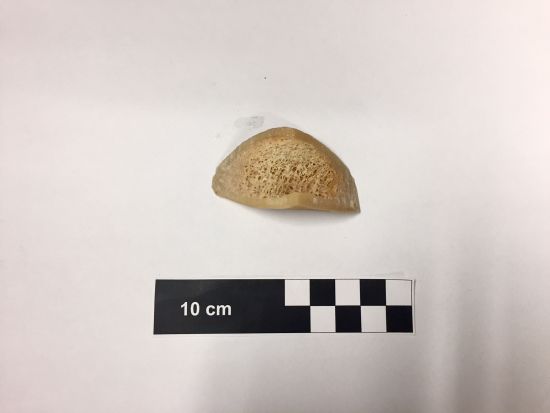
This photo was taken on 7-14-17 during my ethnographic fieldwork.
Vivette García-Deister, "07.14.17/ Gag reflex", contributed by Vivette Garcia-Deister, STS Infrastructures, Platform for Experimental Collaborative Ethnography, last modified 9 August 2019, accessed 3 April 2025. https://stsinfrastructures.org/content/071417-gag-reflex-0
Critical Commentary
This bone sample was obtained from a femur of an unknown male. Not unlike the 49 dismembered body parts recovered in May 2012 in Cadereyta, Nuevo León, the only clue to this victim’s identity is their partial leg. Clad in my white lab coat, Moleskine notebook and pen in pocket, I entered the refrigeration chamber with the forensic expert to find the leg. It was “corroded”, and its stench outcompeted that of the rest of the bodies in the chamber. To comply with regulations, he used a small lift truck to transport the tray with the femur outside the chamber and onto the working station. On a necropsy table, the examiner separated the rotting flesh and cut a V shape into the bone (a “wedge cut”) with a surgical saw. I took notes, holding my breath as I took a closer look, and then turned my head towards the ceiling vent to inhale (a tip I gathered from observing necropsy technicians work during several days). None of us was wearing a facemask. When I asked why we were not wearing one, I was offered the following explanation: “The fabric tends to concentrate and retain the smell, so there is a higher risk of activating our gag reflex and contaminating the sample with vomit”. Back in the laboratory, the bone fragment was washed and demineralized, which preps it for DNA extraction.